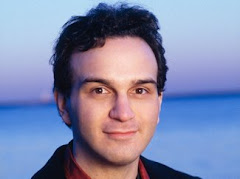A popular Germanic programme of Beethoven and Brahms ensured a capacity house at the DFP for Eiji Oue's concert with the MPO. Opening the concert with Beethoven's Leonore No. 3 Overture - the best of his 4 overtures written for his only opera Fidelio, maestro Oue gave a vibrant and zealous account, presenting a deliberate opening which added an extra degree of tension before leading into a robust airing of the main theme, with a particularly fine patina of rich string sound and dignified brass tone.
Unfortunately, the woodwinds' balance was recessed, especially the important heroic flute solo. After the ensuing quieter interlude, the off-stage trumpet solo was crisply played by William Theis. The music then soon re-erupted into a rumbustious and joyful blast, leading to a terrifically exciting conclusion.
The unquestionable highlight of the concert was the Brahms' Double Concerto Op 102, performed by the two superb DFP debutants, the South Korean violinist Soyoung Yoon and Hungarian cellist István Várdai. The sense of empathy between them was palpable throughout the entire performance. The solo violin and cello truly sang as one single instrument with an extended range and rich timbre. It was perfect rhythmic and dynamically coordinated duet playing.
Oue and the MPO announced the brief forte opening unison statement with indomitable vigour, whose expressive strength was taken up and even amplified by the solo cello’s and violin's opening pensive recitatives. Várdai’s eloquent cello playing registered more strongly than Yoon’s lively contribution, though both soloists exhibited faultless technical and musical command of the score. The minor tonal imbalance was probably due to Várdai’s superb 1673 “ex-Du Pre-Harrell” Stradivarius cello outshining Yoon's fine 1773 "ex-Bückeburg" JB Guadagnini violin, despite maestro Oue's judicious control of the orchestral textures and dynamic balance.
The flowingly paced D major Andante was radiantly played, with Yoon and Várdai spinning warm, silky and eloquent melodic lines of intimate heavenly beauty. Várdai began the brightly-paced final Vivace non troppo movement in an impish manner, bringing out its Hungarian gypsy flavour and folk-dance qualities duly answered by the equally mischievous-sounding Yoon. As the music turned to its tonic major, both soloists, the MPO and Oue brought Brahms' magnificent concerto to a grand conclusion.
After the interval, Oue's interpretation of Beethoven’s Symphony No 5 in C minor was a good symphonic account. Oue thrashed around wildly in all directions, often exceeding the exaggerated stage manner of his mentor Leonard Bernstein as he implored the MPO to give yet more and more. Often the MPO's response was slightly muted and detached relative to Oue's original intentions and it was frankly a bit tiring to watch maestro Oue leaping around on the podium.
Gesturing vigorously to keep a palpable decent pace, he drew from the MPO variegated layers of colour and a set of dynamics that verged on the louder end of the scale for the first movement. The richness of the lower strings initiated the slow movement and Oue painted a sumptuous tapestry of sound, interspersed with martial fanfares from the brass.
The warmth of the lower strings was also highlighted in the third movement, where Oue’s fondness for playing with generally louder dynamics made the mysterious transition from the third movement's C minor into the blazing C major opening fanfare of the fourth movement less effective than it could be. Tempo-wise, the transition from the third to fourth movement seemed okay, albeit a hair's breadth slower than ideal. In the fourth movement, Maestro Oue’s exaggerated gestures produced a fine forward momentum, leading to a cathartic end of Beethoven’s mighty opus.
Saturday, 20 October 2018
Yoon and Vardai shine in Brahms' Double
Subscribe to:
Post Comments (Atom)



















































No comments:
Post a Comment